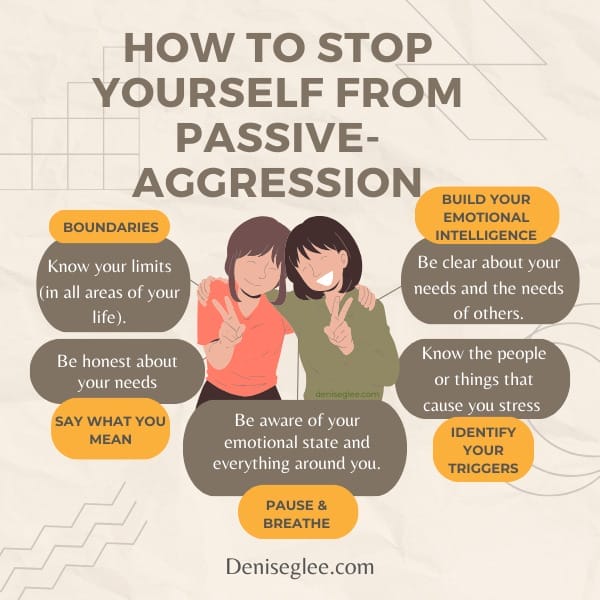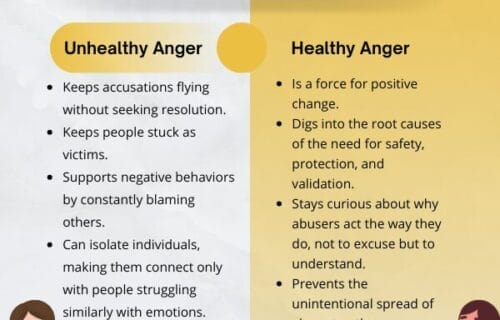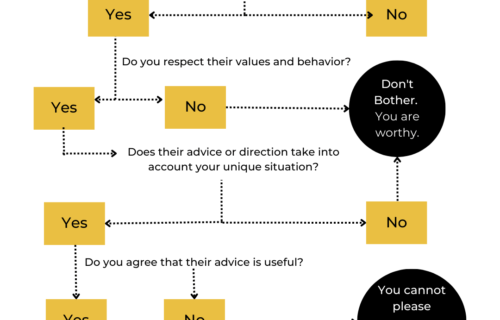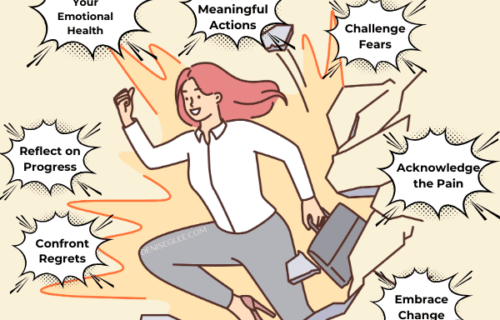
Understanding Passive Aggressive Behavior and Its Impact
Do you consider yourself to be passive-aggressive? You know, those moments when you find yourself unable to make and keep commitments with others on a consistent basis. If that is you, don’t feel embarrassed. I know what it’s like to find yourself doing things that you know are unhelpful, but you feel like it’s the only way you can relate to controlling and aggressive personalities.
As a life coach for business owners, I place a heavy emphasis on improving our communication skills. This is isn’t just important for our careers, but how we relate to all people in our world. That’s why in this article, we will discuss the origins of passive-aggressive behavior and give you some tools to help you resist the urge to sabotage via inaction or hesitation.
Origin of Passive Aggressive Behavior
So… a lot of us had some really insecure and scared folks in our families. These fears turned into them trying to control, criticize, and condemn everyone around them.
I’ll never forget those days when I lived with my father and his then-girlfriend Sandra.
I don’t want to see any dirt on that floor
Sandra came from a home where perfection was demanded. According to her, as a child, her mother’s house was decorated in all white – white carpet, white furniture, and accessories. Everything had to be spotless at all times, leading to immense stress in maintenance.
One would think that as an adult, Sandra would run far away from anything that would remind her of that past. But nope – if anything, she carried on the tradition with her daughters and me.
I have vivid memories of being woken up in the middle of the night to “spot clean” the entire living room. Thankfully, we lived in a small apartment, but the level of scrutiny she had for every nook and cranny in that small space astonished me.
Everything has to be perfect
You may have always had a relative that demanded that things were PERFECT, and they insisted that their way was the ONLY RIGHT way to act. It might sound strange because, to do that, you’d have to be able to read minds and feel as anxious as they are to predict every move they’d make in your situation.
As you might guess, many of us started acting passive-aggressively as a way to combat their overtly aggressive behavior. Next, let’s zoom in and take a closer look at passive aggressive behavior.
Choosing how we deal with people, even if they make us nervous, is up to us. We don't have to play games or make things messy just to handle our own fears.
Denise G. Lee Tweet
What does passive aggression look like?
Passive aggression comes in all sort of wonderful flavors. Here are the common signs you or someone you know is passive aggressive.
- Forget, miss, avoid overlook an important details your aggressor asked you earlier.
- Change your mind often and pretend there were more options when there weren’t.
- Act busy or purposely fill up your calendar in order to avoid a mean, aggressive or bossy person.
Help! I’m passive aggressive. What do I do?
Changing these habits is tough! We got used to being a bit sneaky and avoiding people who were too pushy, and now it’s our secret way of getting back at them.
But things can be different when we’re getting better.
Instead of always being scared and trying to mess things up for our bossy family member or anyone else in our life, we can decide how we want to act when they’re being anxious.
We can talk about it—not just for our own feelings but for all our relationships.
Choosing how we deal with people, even if they make us nervous, is up to us. We don’t have to play games or make things messy just to handle our own fears.
We don’t need to ruin our lives just to get back at others. There’s a better way to live. In the next section, I have some tips to help you end the passive aggressive behavior.
How to stop being passive aggressive
Stopping being passive-aggressive, especially if you grew up around bossy or controlling people, can be hard. But hey, with some effort, you can totally do it! Here are some simple things you can try:
1. Know Yourself:
Figure out when you’re being passive-aggressive. Usually, it happens when someone is unrelentingly critical or demanding of you. In those times, be honest with yourself.
How do you feel? What are your ‘go-to’ strategies when you want to lash out without being accused directly of wrongdoing? Understanding your hidden motivations can help you fix the real issues.
2. Talk with a Feelings-Pro:
Healing passive-aggressive tendencies is not something you can accomplish through self-study alone. Many of us are skilled in masking our past emotional pain from everyone, including ourselves. Now is the time to speak with a therapist or a trauma-informed coach, such as myself. We know a lot about emotions and can offer you personalized advice.
3. Say What You Mean:
As I mentioned earlier, lots of people do a great job of trying to hide their feelings. At first, it was a defense strategy, now it has become a way of living our lives. However, things are different now. The next time you feel stressed or annoyed, try saying what’s on your mind directly.
Don’t be sneaky; use “I” statements to express your feelings and needs. Learn to speak up for yourself in a strong but polite way. It’s like being a superhero with words. Say “no” when you need to and set your own rules.
4. Set Some Rules:
For many of us, we allow the emotionally unsafe and controlling people around us to set all the rules. They determine what is okay or not okay to say, and we feel completely powerless around these bigger-than-life personalities. However, setting rules is not about dictating to people what they can and cannot do but rather establishing boundaries around what you will and will not tolerate.
It’s essential to communicate to others what you’re okay with and not okay with. By doing so, you can keep yourself from feeling controlled and avoid behaving in a passive-aggressive manner. Here are some more tips to help you share your feelings honestly with others.
Most people aren't trying to get you or harm you. What they are trying to do is get their needs met without consideration of others. Now you get to model to them that you can express your needs with care about others.
Denise G. Lee Tweet
5. Solve Your Problems Head-On:
Many of us bury our heads in the proverbial sand like an ostrich, thinking that if we avoid problems long enough, they will take care of themselves. Unfortunately, communication issues tend to worsen and become harder to repair when ignored. Instead of avoiding problems, confront them directly.
Focus on “I” rather than “you” to emphasize your feelings and desires. Collaborate with the other person to find a mutually satisfying resolution.
6. Think Like Others:
When someone tries to control others, it may seem strange or unreasonable. But it’s important to see things from their point of view. Often, they’re afraid or worried about something, and trying to control things makes them feel better.
Instead of thinking of them as mean, it’s better to understand that they’re just struggling to cope. By seeing them this way, you can be kinder and more straightforward when dealing with them, instead of being sneaky or unkind.
7. Keep Calm:
Try to keep calm and relaxed. Remember, not everyone is trying to hurt us or make things difficult for us. When we take a moment to relax and let go of stress, we can avoid behaving in a passive-aggressive manner during tough situations.
8. Hang Out with Kind and Considerate People:
Being with mean and critical people can make our view of life negative and worsen our conversations. But it doesn’t have to be that way. If we spend time with people who communicate with kindness and respect towards others, we can feel less stressed and improve our outlook on controlling behaviors.
9. Keep Learning:
Reading this article or anything else from my blog cannot be the end of your healing journey, and it mustn’t be. Take some time to read more about being honest with your feelings. You can take one of my courses and learn to be more intelligent about how you relate to others and yourself. Learning more will help you improve.
Remember, it takes time to change, so be kind to yourself as you try to stop being passive-aggressive, and congratulate yourself when you do something good. The picture below summarizes my top tips. In the following section, I will share my final thoughts.

Final Thoughts
The road to stop being passive-aggressive is a journey that keeps going. It means you have to keep learning and trying, but guess what? You can change, and it’s important to celebrate the little wins along the way.
If you want some help personalized just for you, I’m here for you. We can work together to make your communication better, help you be more confident, and grow personally.
To add to what we talked about, I suggest checking out out this episode from my podcast. It goes deeper into why people act passive-aggressively and gives more ideas on how to get better. Thank you for reading this article. Best of luck to your journey of becoming a better you!





